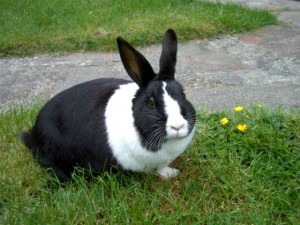 As I read through the third volume of the Winthrop Papers, one of the Winthrop correspondents I have most enjoyed is Edward Howes, described succinctly in a footnote as a “student of law, alchemist and mystic, clerk to [John1 Winthrop’s brother-in-law] Emmanuel Downing, [and] friend of the younger John Winthrop.” (Volume 2, p. 226) I find myself looking forward to Howes’ letters’ salutations, and to the mixture of folk wisdom, political intrigue, and religious fervor I find within their pages. At times Howes and John2 Winthrop sound like the young men they were, not far removed from university punning; in other letters, Howes can be quite formal and business-like as he fulfills commissions for the Winthrops and the Downings.
As I read through the third volume of the Winthrop Papers, one of the Winthrop correspondents I have most enjoyed is Edward Howes, described succinctly in a footnote as a “student of law, alchemist and mystic, clerk to [John1 Winthrop’s brother-in-law] Emmanuel Downing, [and] friend of the younger John Winthrop.” (Volume 2, p. 226) I find myself looking forward to Howes’ letters’ salutations, and to the mixture of folk wisdom, political intrigue, and religious fervor I find within their pages. At times Howes and John2 Winthrop sound like the young men they were, not far removed from university punning; in other letters, Howes can be quite formal and business-like as he fulfills commissions for the Winthrops and the Downings.
In November 1631, Howes writes “Charissime J. W., Health to you and to all the Israell of God; as this doth testifie my life and health, soe let it my harte and minde. Perswade yourself that all the water between us shall not be able to wash away my former professed loue to you and the place where you are… The books Mr. Gurdon [Brampton Gurdon, the future father-in-law of Richard2 Saltonstall] hath fetcht away; and the Luna is at your service; soe is both the books and Sol et quodcunque sub sole habet vel habebit me tuum.” (Volume 3, p. 54)
Late in 1632, replying to a letter dated “July last,” Howes notes that a varnish “for clothes to keepe out wett, I cannot yet learne, but as soone as I can, the next ship after shall acquaint you with it.” He then gives Winthrop a cipher key, one for all the letters of the alphabet with abbreviations for the words Christ, God, Jesus, king, lord, and people – precautions evidently necessary at a time when relations between the Court and Parliament were daily worsening. “A little vse will make perfectnes; send me word whether you like it and I will send you more direccions.” (Ibid., p. 95)
Howes wrote in a different mood in August 1633. “Mr. Robert Saltonstall hath giuen me one of his breeding Rabitts a blak one with a white streake downe the nose, which he with others nowe sends ouer. He made me paye for [a] store of foode for the Rabitt in her passage. If it dye I am to haue another, and he hath promised to write to his brother Samuell to sett the breed[ing] of that or one other apparte for me; I refused this kindne vntill his importance [e.g., importuning] forced it on me… If I can get of Sir R. [Sir Richard1 Saltonstall, father of Richard, Robert, and Samuel] a kidd or a Calfe, I shall thinke myse selfe reaonablie well rewarded of him for my paines.” (Ibid., p. 138)
Three years later, Howes showed he could turn a pretty compliment: “The manie obligations where with you haue tyed me to you being soe pleasant and delightfull, doe constraine me to sue, to be more fast tyed.” Somehow Winthrop and Howes managed to keep these ties strong even when separated by 3,000 miles and months between letters. In September 1636, Howes adds “I doubt [not?] I haue bin too tedious and troublesome [it has taken him a month to reply to Winthrop’s latest letter, but], it’s my loue to you constraineth me to write the more, because we cannot speake together.” (Ibid., pp. 290, 292–93)
Share this:
About Scott C. Steward
Scott C. Steward has been NEHGS’ Editor-in-Chief since 2013. He is the author, co-author, or editor of genealogies of the Ayer, Le Roy, Lowell, Saltonstall, Thorndike, and Winthrop families. His articles have appeared in The New England Historical and Genealogical Register, NEXUS, New England Ancestors, American Ancestors, and The Pennsylvania Genealogical Magazine, and he has written book reviews for the Register, The New York Genealogical and Biographical Record, and the National Genealogical Society Quarterly.View all posts by Scott C. Steward →